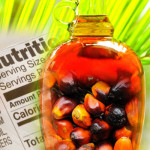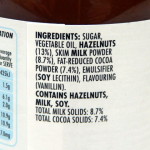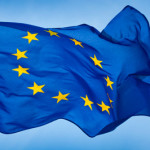EU Court’s Opinion on Misleading Food Labels
 What words should food and beverage manufacturers be required to place on the label of products? What should they be allowed to add on their own? EU law has been adopted to regulate such issues, so that consumers have enough information to make informed choices.
What words should food and beverage manufacturers be required to place on the label of products? What should they be allowed to add on their own? EU law has been adopted to regulate such issues, so that consumers have enough information to make informed choices.
The opinion of the Court of Justice of the European Union (CJEU) have added to its application in practice in two cases – Bundesverband der Verbraucherzentralen und Verbraucherverbände – Verbraucherzentrale Bundesverband e.V. v Teekanne GmbH & Co. KG (Teekanne); and Neptune Distribution v the French Minister for Economic Affairs and Finance (Neptune).
These preliminary rulings show that, even where truthful statements are made on the labelling of food and beverage products, consumers may still be misled if the information – on aggregate or as a whole – implies and conveys another message.
Although Teekanne and Neptune cases respectively deal with tea and mineral water labelling, the legal concepts can be applied to other food products, in particular, those containing palm oil. The opinions add guidance to the concept of a misleading label, when considered in its entirety.
Teekanne’s product labelling
On June 4, 2015, the CJEU handed down a preliminary ruling following a request by the Bundesgerichtshof (BGH, the German Federal Court of Justice) in the proceedings of a consumer protection association (Verbraucherzentrale Bundesverband) and tea manufacturer Teekanne.
Teekanne marketed a fruit tea called Felix Himbeer-Vanille Abenteuer (Felix Raspberry and Vanilla Adventure). The packaging had images of raspberries and vanilla flowers and the words ‘fruit tea with natural flavourings’ and ‘fruit tea with natural flavourings – raspberry-vanilla taste’.
The ingredients were: ‘Hibiscus, apple, sweet blackberry leaves, orange peel, rosehip, natural flavouring with a taste of vanilla, lemon peel, natural flavouring with a taste of raspberry, blackberries, strawberry, blueberry, elderberry’. However, the product did not contain natural ingredients or flavouring from vanilla or raspberry.
The consumer protection association alleged that Teekanne had misled consumers, who would expect the tea to contain vanilla and raspberry or, at least, natural vanilla flavouring and natural raspberry flavouring.
The BGH asked the CJEU for a preliminary ruling on whether the label may mislead consumers when it gives the impression that a particular ingredient is present – even though it is not, and the only way to be aware of this is by reading the list of ingredients.
Given the date of the facts in Teekanne, Directive 2000/13/EC on the approximation of the laws of the EU member-states relating to the labelling, presentation and advertising of foodstuffs still applied. The CJEU recognised that:
- Article 2(1)(a)(i) requires that consumers have correct, neutral and objective information. While they are assumed to read the list of ingredients, the CJEU did not exclude the possibility that the label may still mislead when items are erroneous, ambiguous, contradictory or incomprehensible.
- The CJEU reasoned that the list of ingredients, even though correct and comprehensive, may not sufficiently correct the erroneous or misleading impression gained from the label.
- Under Article 16 of Regulation No 178/2002 on the general food law, the labelling, advertising and presentation of food or feed – including their shape, appearance or packaging; the packaging materials used; the manner in which they are arranged; and the setting in which they are displayed – must not mislead consumers.
The CJEU does not rule on disputes from a factual perspective. It provides preliminary rulings on theoretical legal questions arising from national courts in EU member-states; and those courts are then responsible for ruling on individual cases.
With its decision, the CJEU deviated from its previous jurisprudence in relation to the ‘average consumer, who is reasonably well informed and reasonably observant and circumspect’. This change of direction could have far-reaching consequences for the food industry and the design of product packaging. On Dec 2, 2015, the BGH, applying the CJEU’s reasoning and criteria, found that the product labelling may mislead consumers.
Ruling in Neptune case
The CJEU published another ruling on Dec 17, 2015, in the case of Neptune, a French distributor of bottled mineral water. This confirmed that a holistic approach must be taken when assessing whether food labelling is misleading.
Neptune sells two brands of natural sparkling mineral water. It made specific claims in relation to the type and amount of sodium contained. It also claimed the presence of sodium bicarbonate, and not table salt, in these products.
The Annex to Regulation (EC) No. 1924/2006 on nutrition and health claims made on foods (NHCR) expressly lists ‘very low in sodium/salt’ as a prohibited claim, absent approval, with respect to natural mineral waters and other waters.
Article 9(2) and Annex III of Directive 2009/54/EC on the exploitation and marketing of natural mineral water state that indications that a product is low in sodium or salt, or are suitable for a low-sodium diet, may only be used when the total sodium content is less than 20 mg/l.
Due to the language suggesting that its products contain low or very low levels of salt or sodium, Neptune was ordered to stop using the labels and other statements in its labelling or advertising of Saint-Yorre and Vichy Célestins. The company challenged the order.
The French Council of State asked the CJEU for a preliminary ruling on whether the sodium content must be calculated solely on the basis of sodium chloride (table salt), or whether it must account for the total amount of sodium in all its forms (including sodium bicarbonate).
The CJEU recognised that:
- The NHCR prohibits the claim ‘very low in sodium/salt’ with respect to natural mineral water and other water unless the total sodium content is below 20 mg/l.
- The EU legislature wants consumers to have appropriate and transparent information on the sodium content of drinking water. Since sodium is a component of various chemical compounds (like sodium chloride and sodium bicarbonate), the quantity present must take account of the total amount, whatever its chemical form.
The CJEU found that consumers might be misled where the packaging, label and advertising for natural mineral water suggest that products are low in sodium or salt, or are suitable for a low-sodium diet, when they actually contain 20 mg/l or more of sodium.
The take-away from these cases
The CJEU’s reasoning reinforces the requirement that the potentially misleading nature of food labelling must be considered in the context of the packaging as a whole, regardless of the technical truth of any specific statements.
With respect to palm oil, since Dec 13, 2014, the use of any vegetable oil in a food product must be expressly listed in the list of ingredients. This is a key factor in the analysis of what may mislead a reasonable consumer when confronted with a ‘No palm oil’ label, especially in relation to other food products available.
As observed in Teekanne, the images on packaging are also important. Where the ‘No palm oil’ label is used and if labelling emphasises the ‘healthy’ characteristics of a food, consumers may be misled into believing that palm oil consumption is ‘unhealthy’. In reality, the nutritional characteristics of palm oil are comparable to other vegetable oils.
Whether it be in relation to tea, water or palm oil products, food manufacturers should not be allowed to mislead consumers. And the EU has rightly codified this protection in determining that statements on labels must be considered holistically.
FratiniVergano
EuropeanLawyers










Leave a Reply